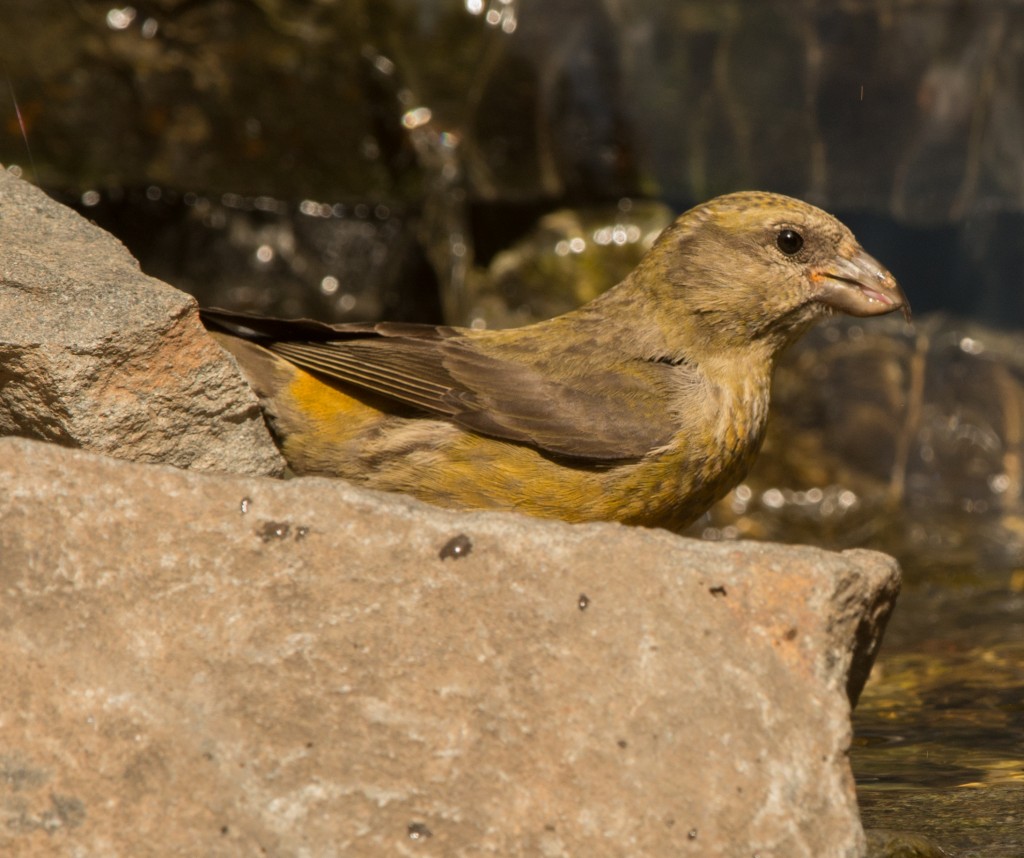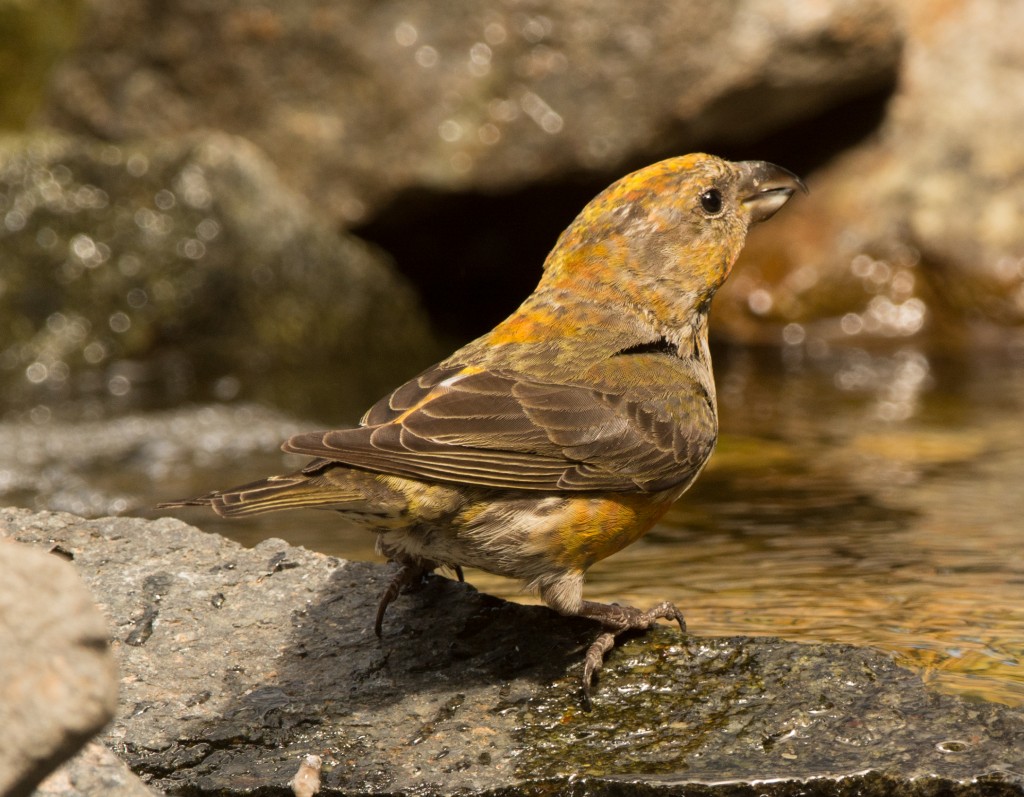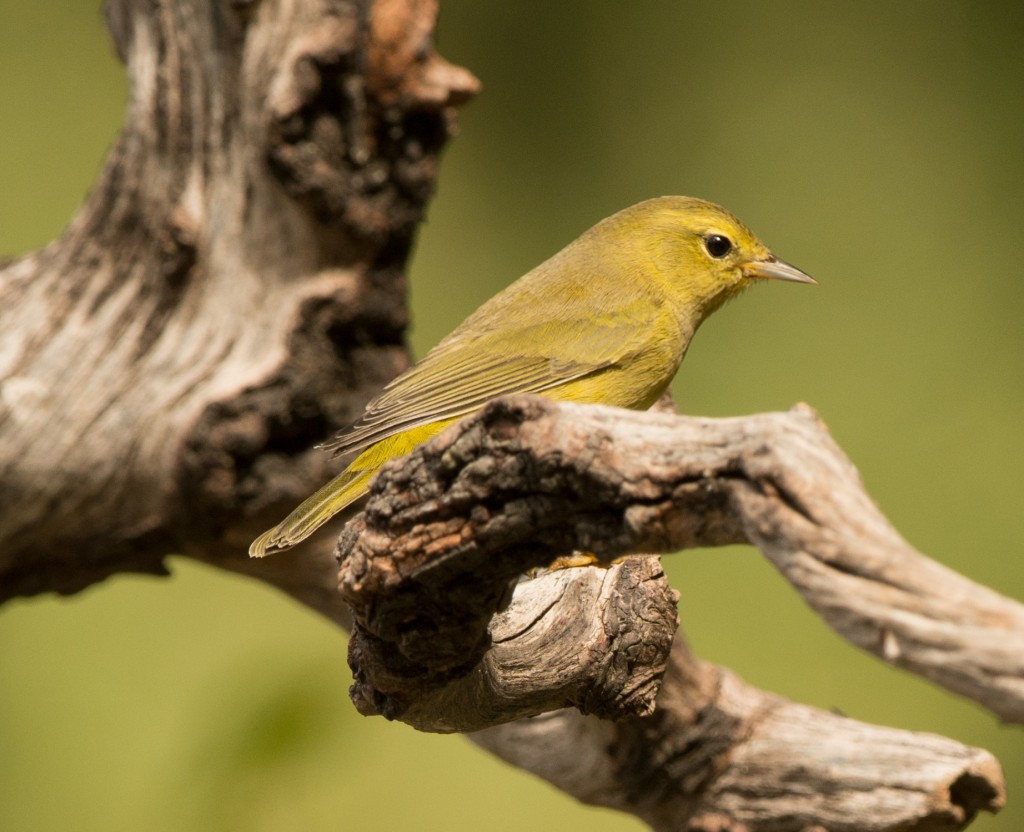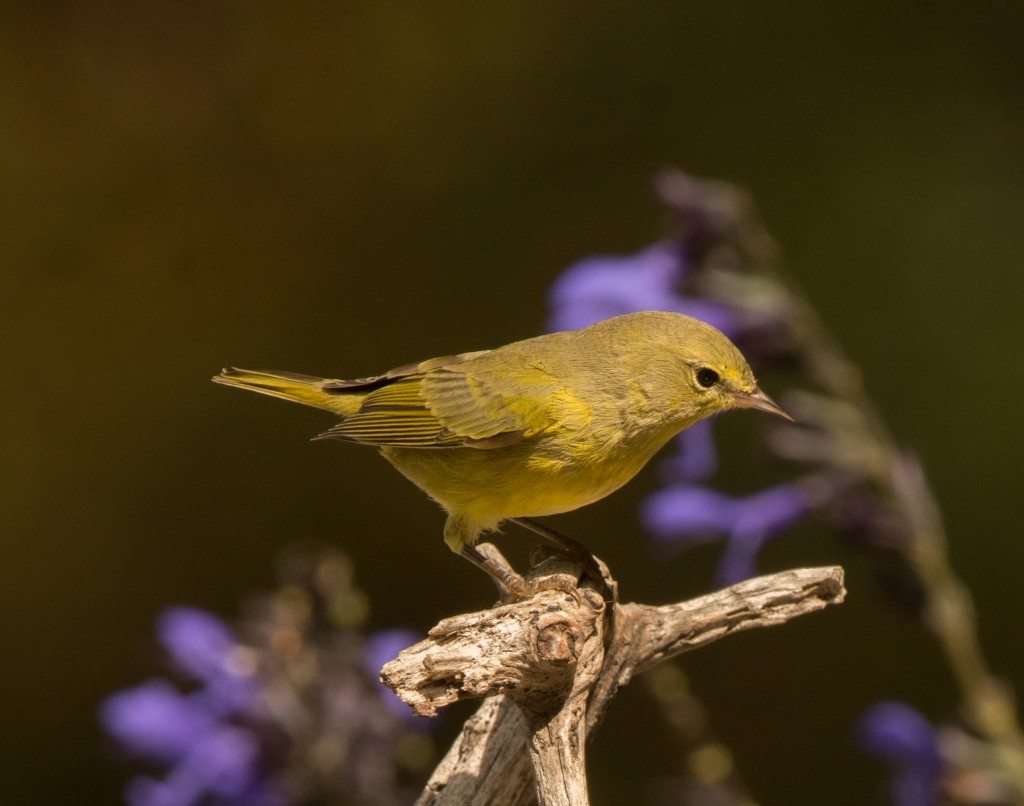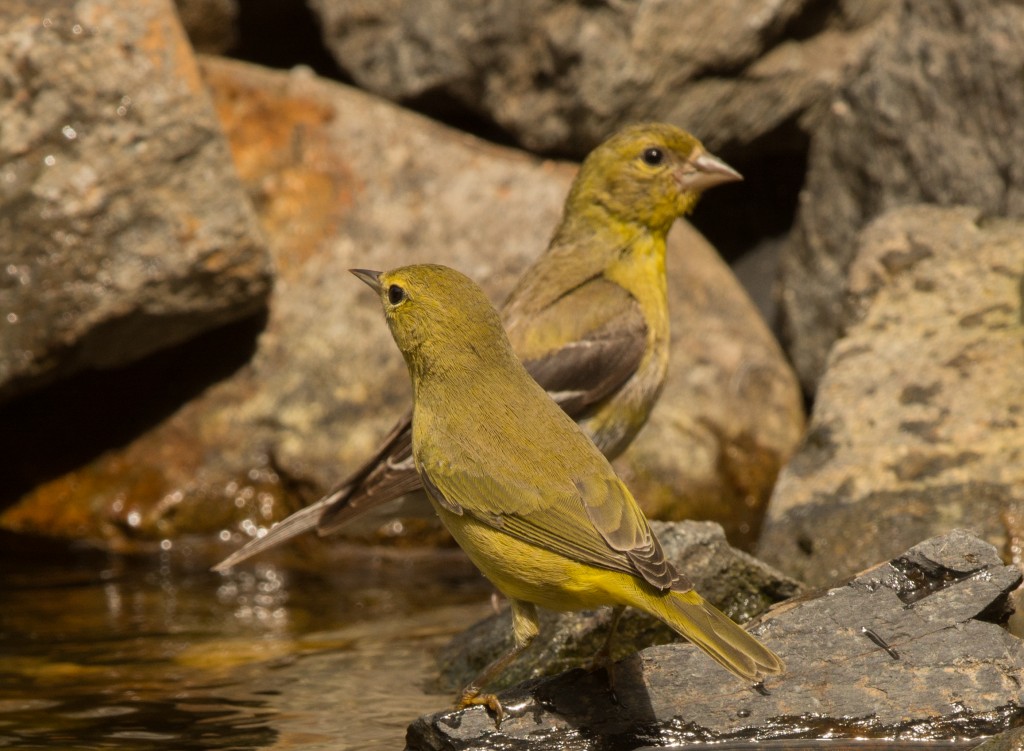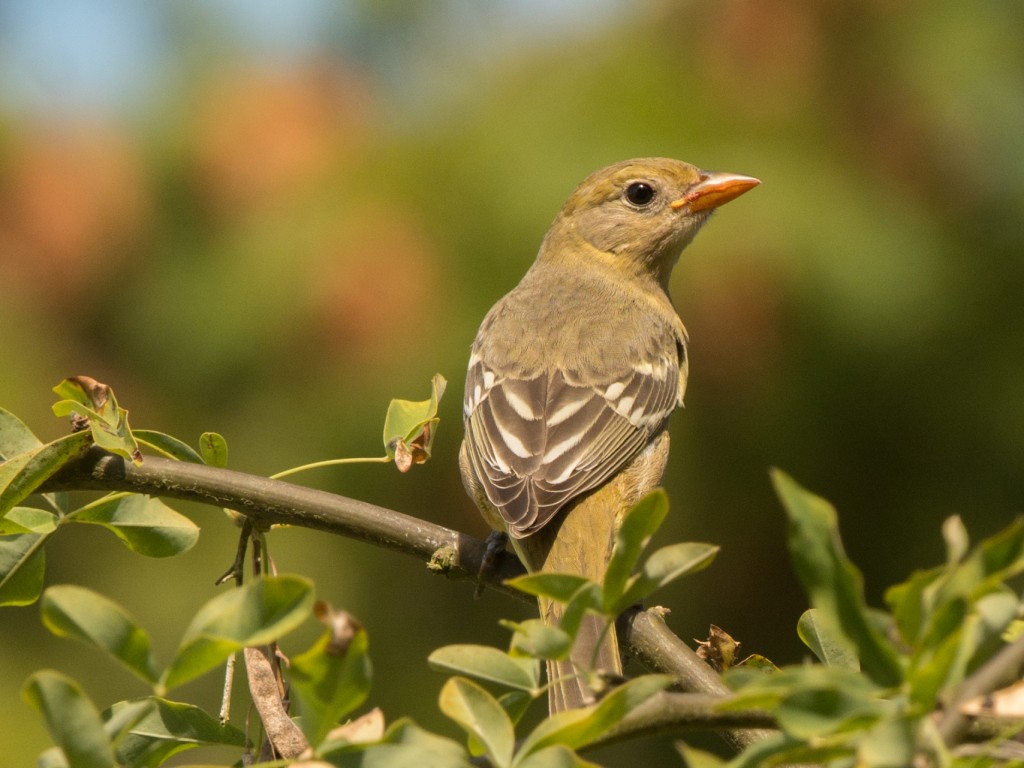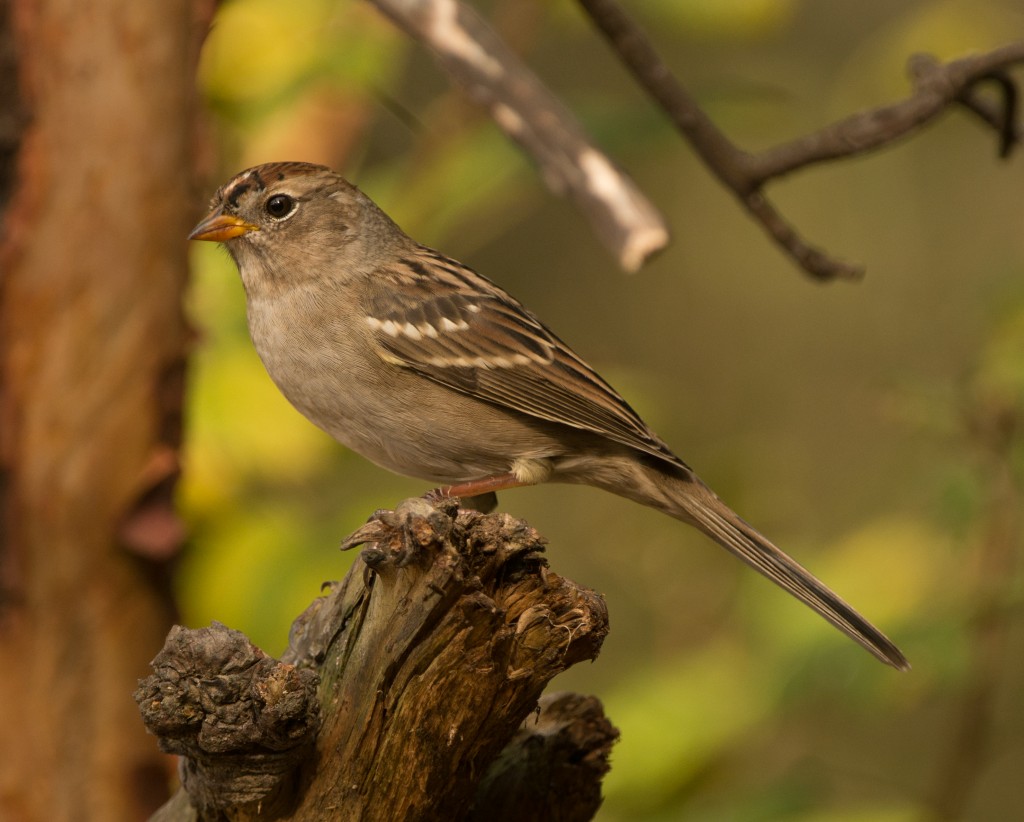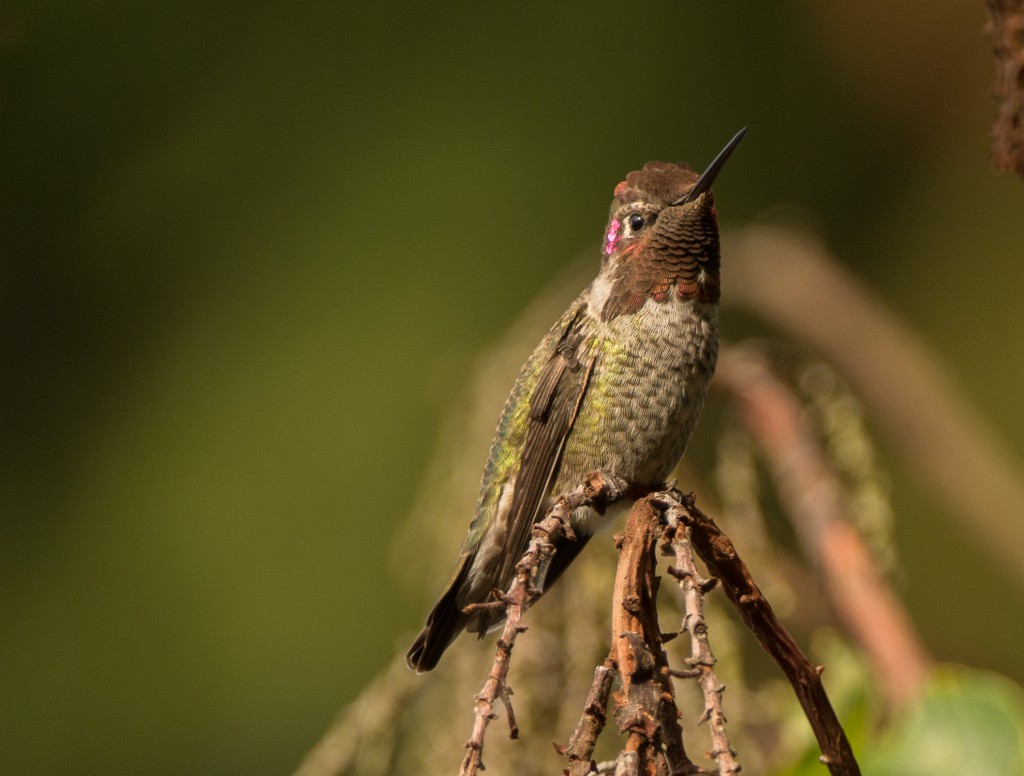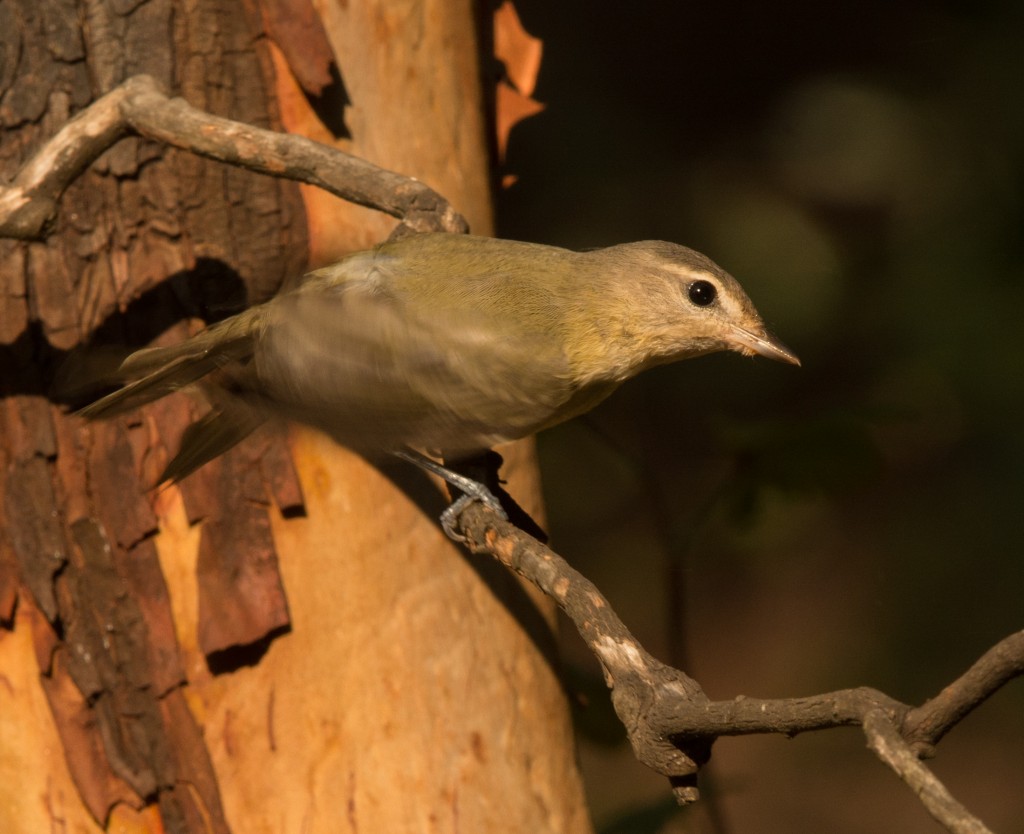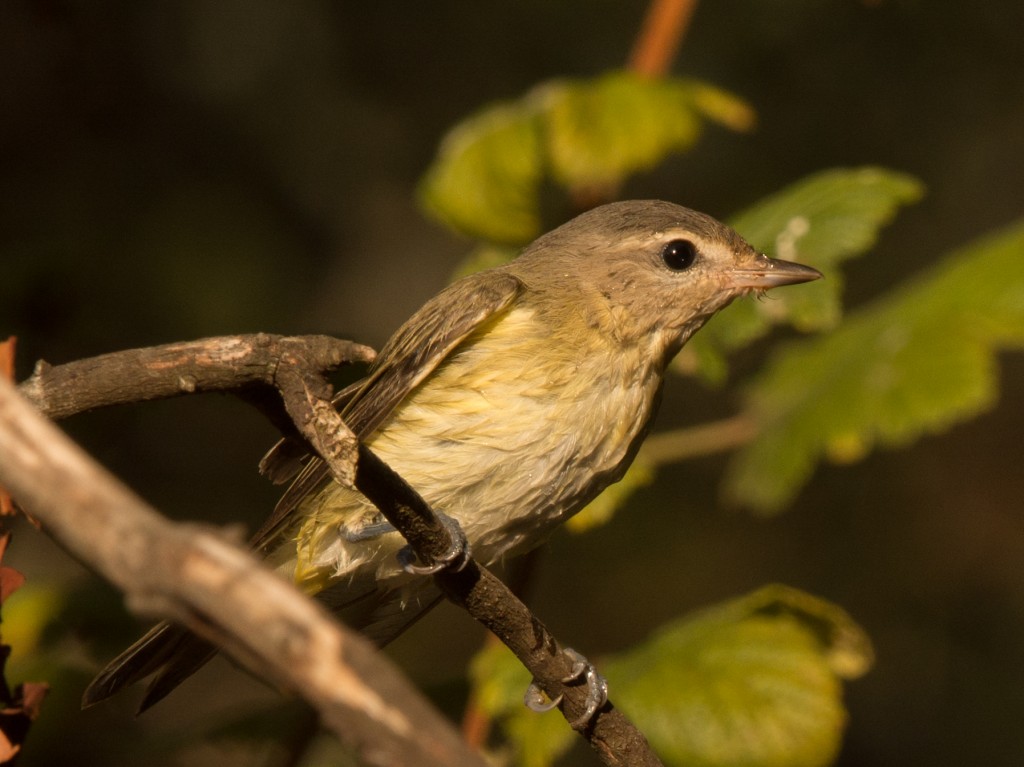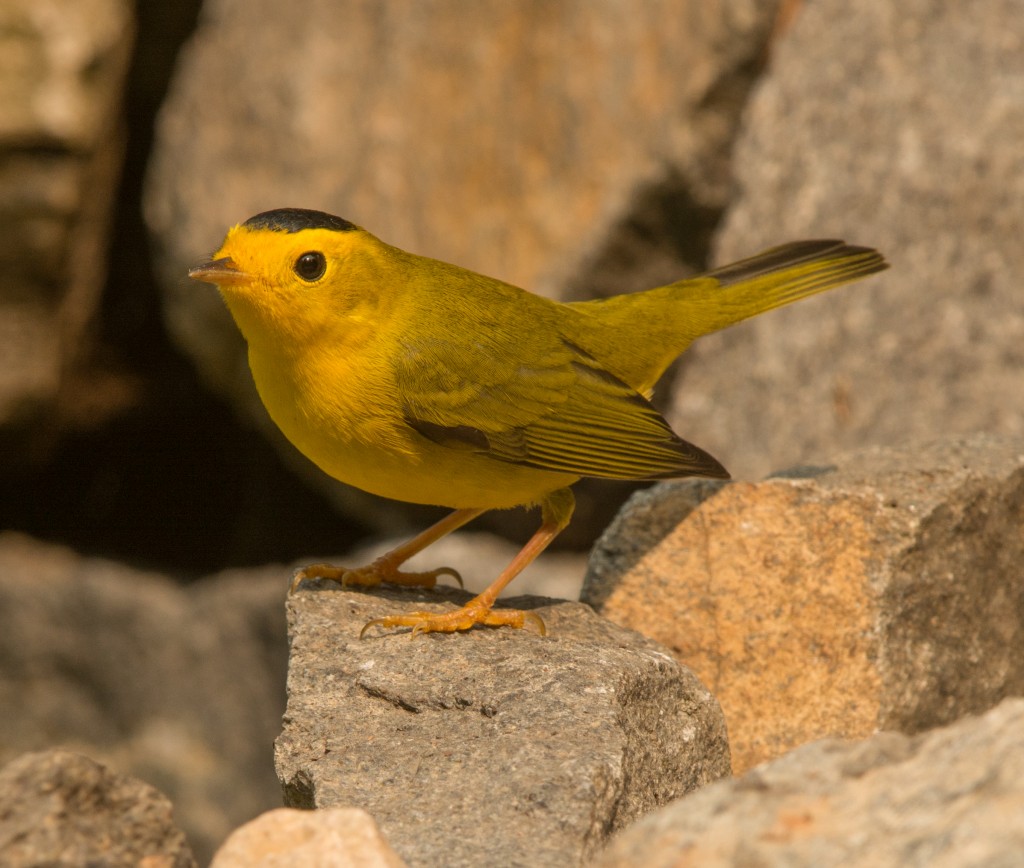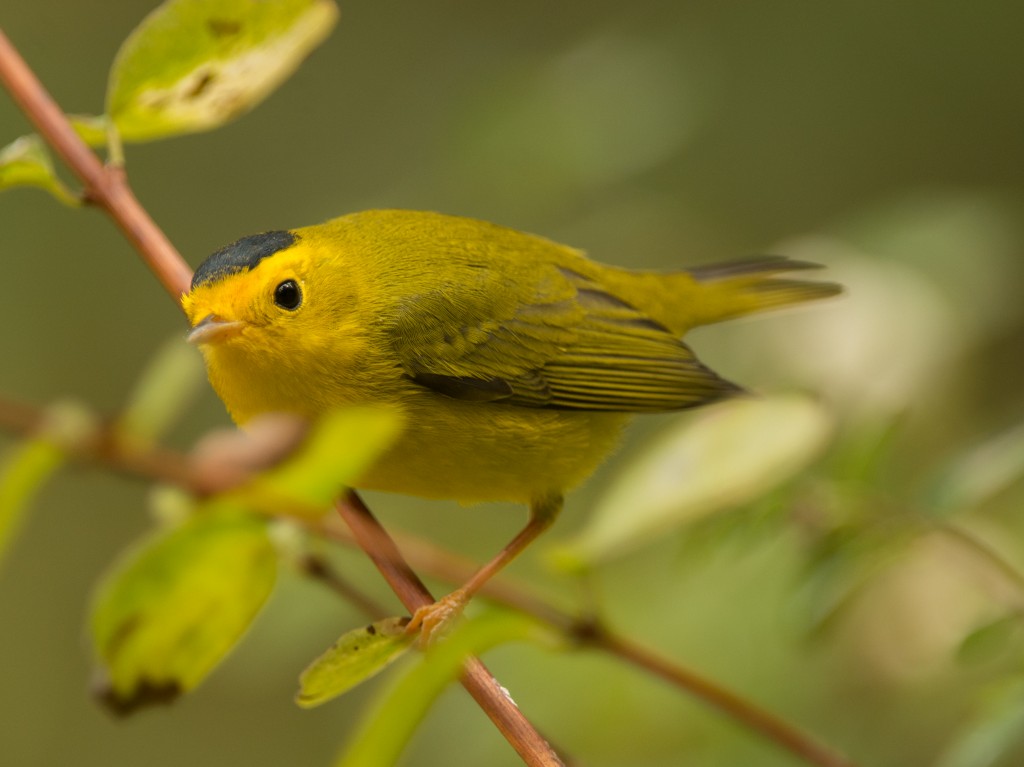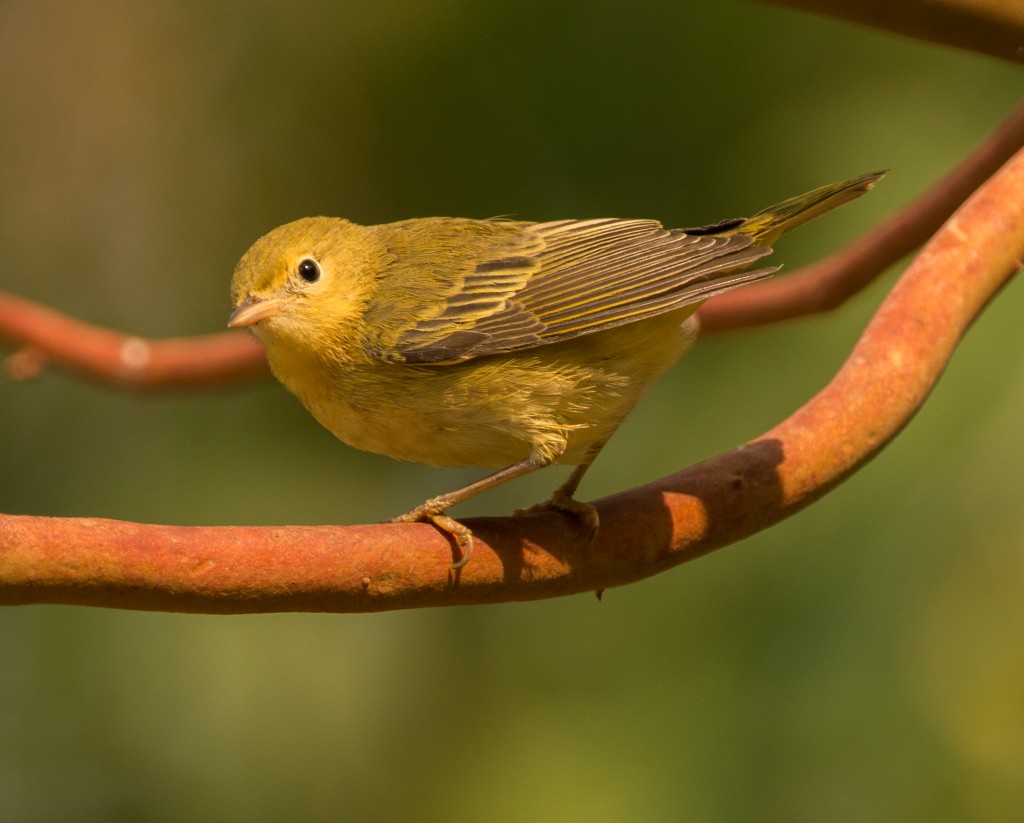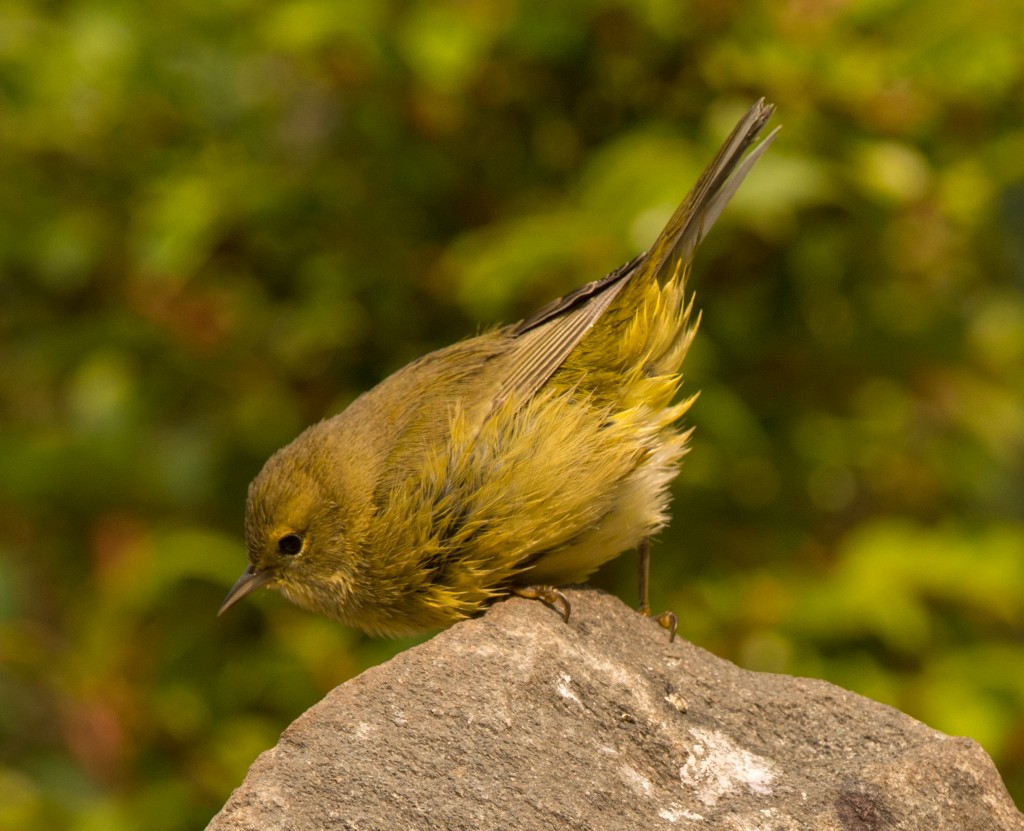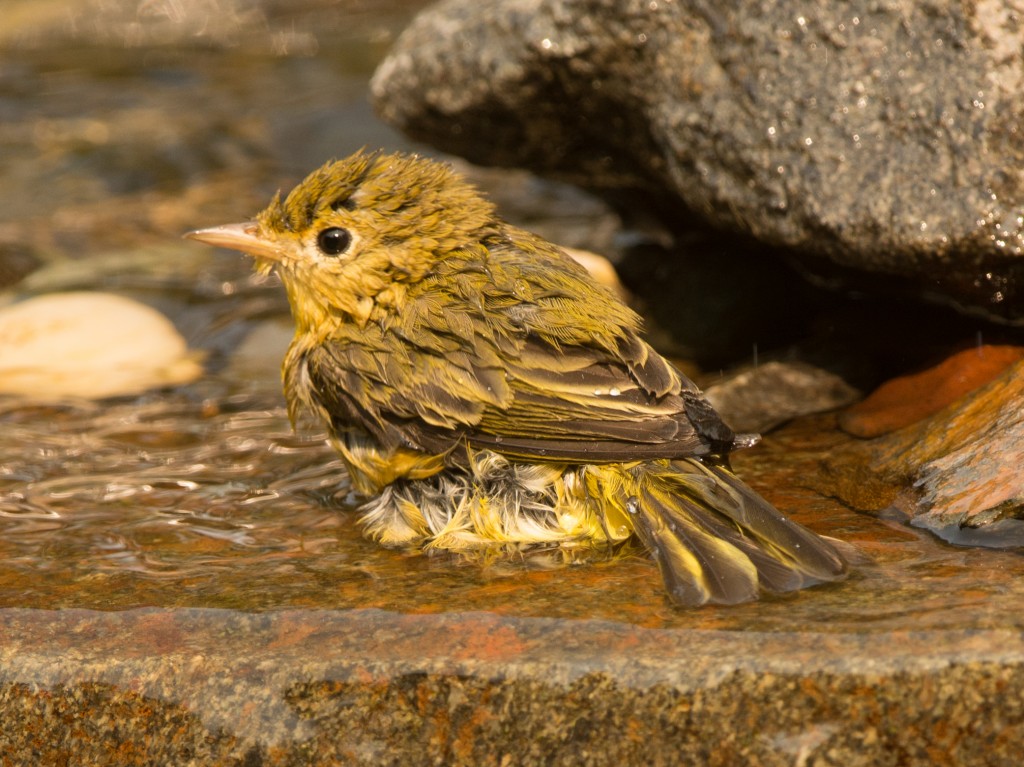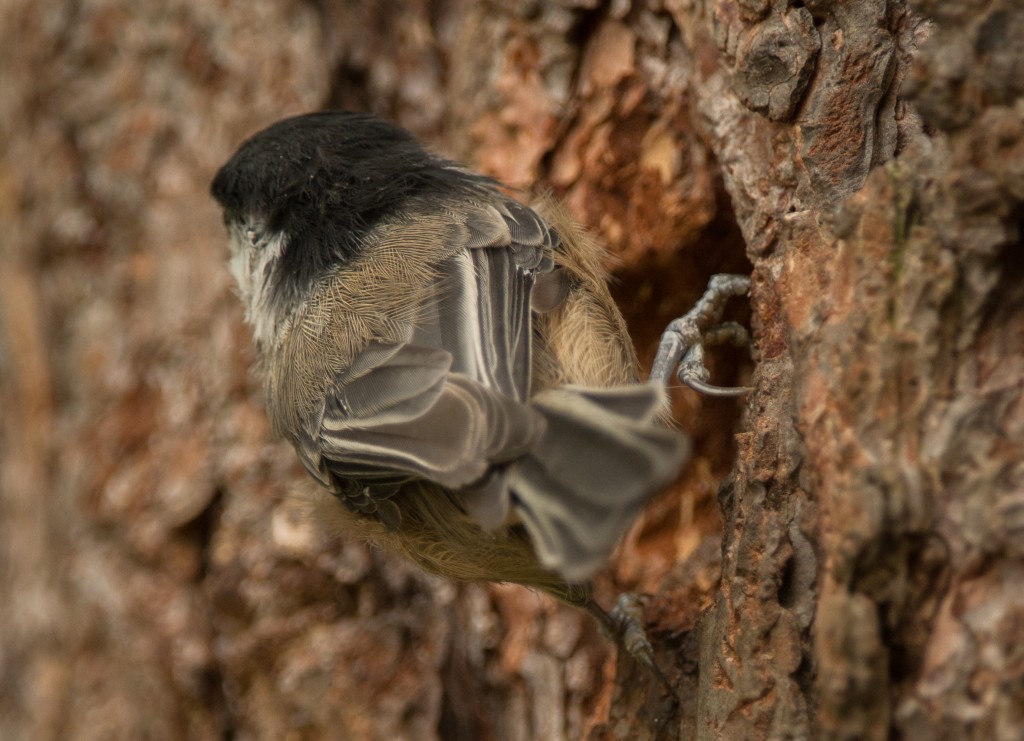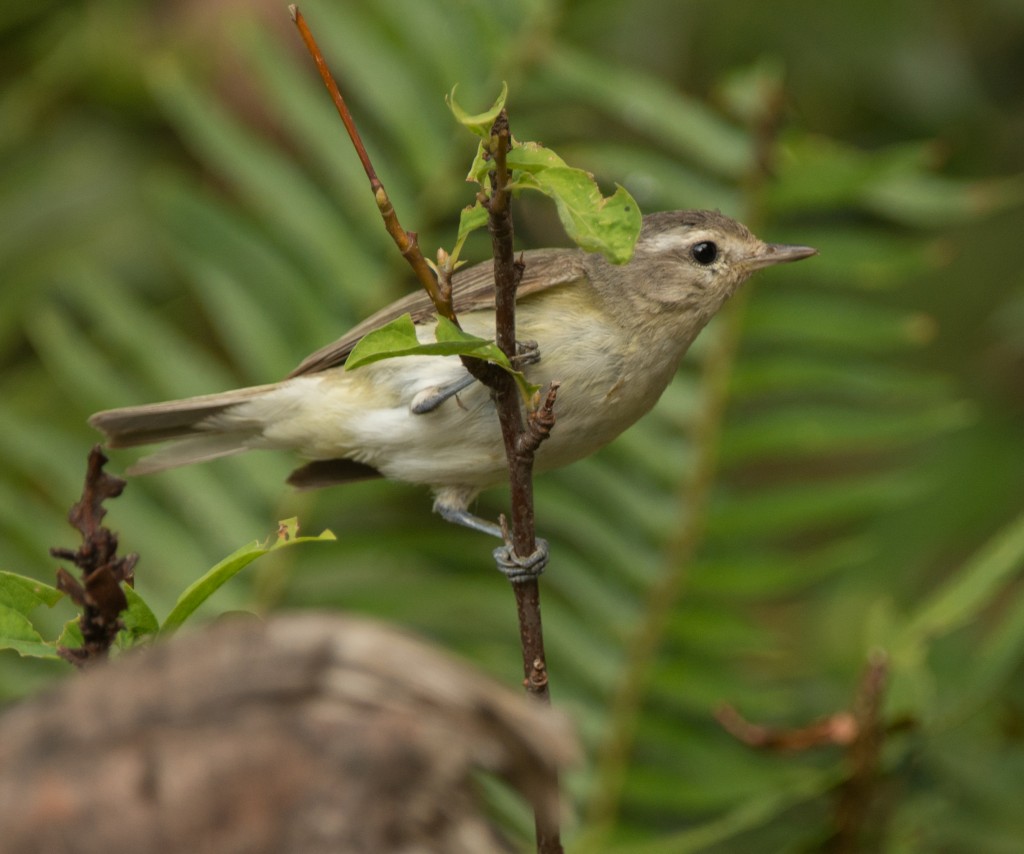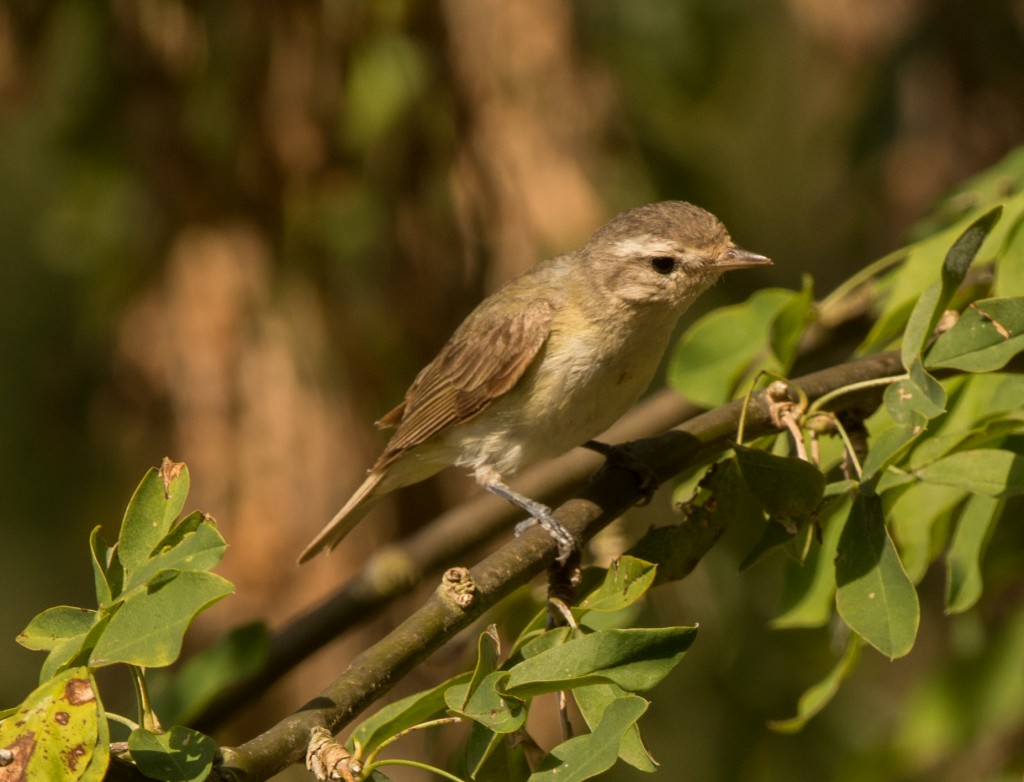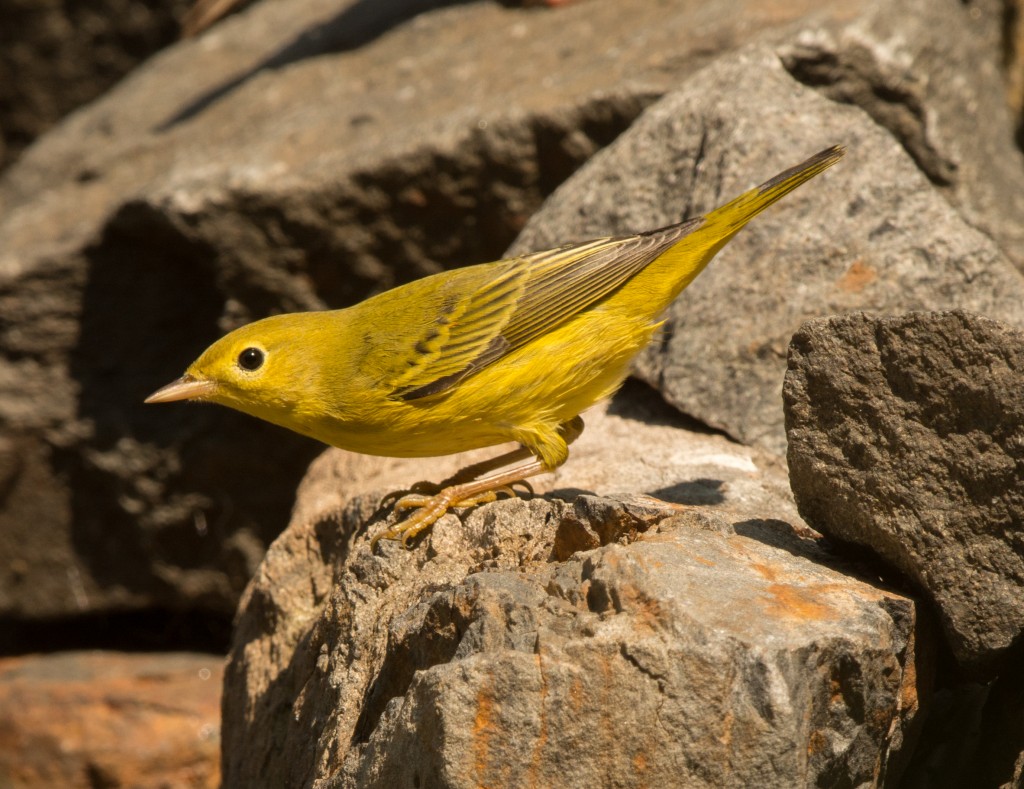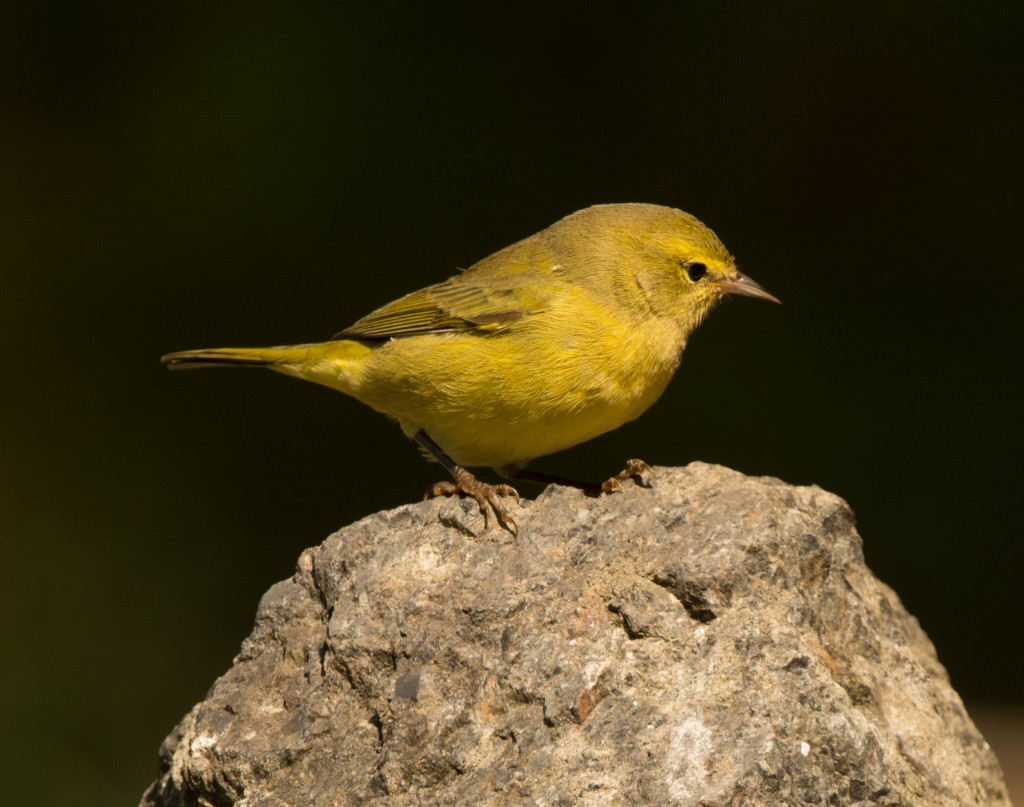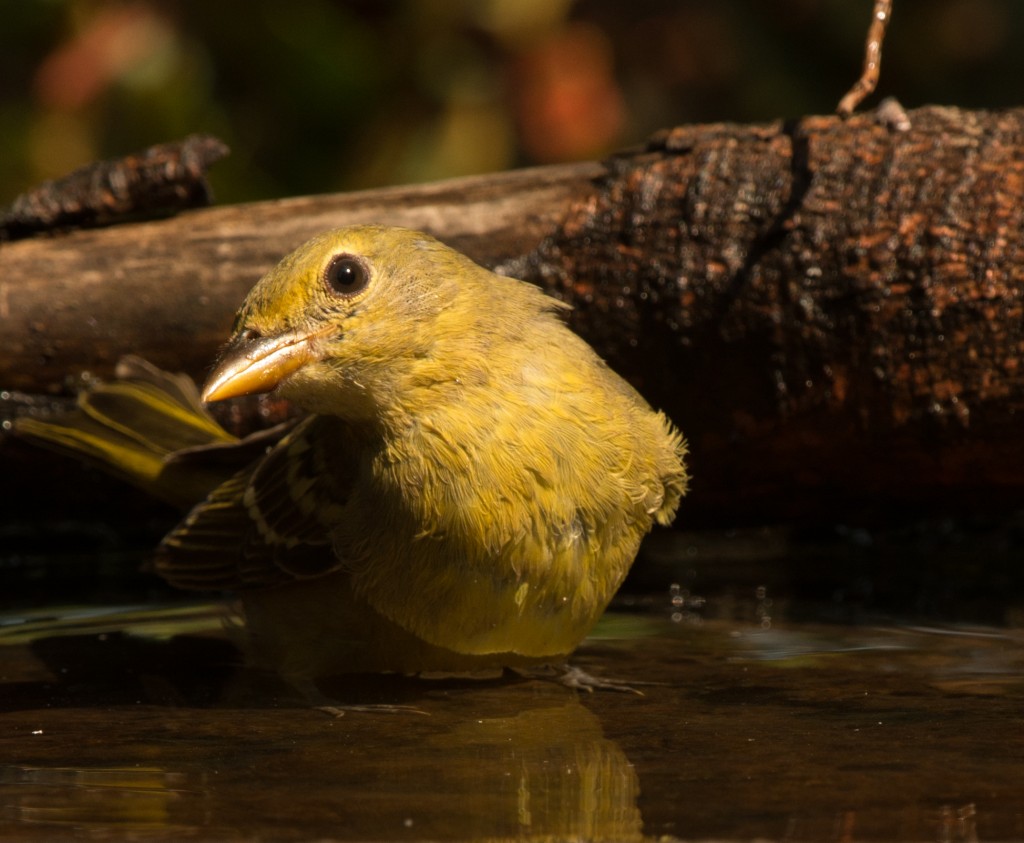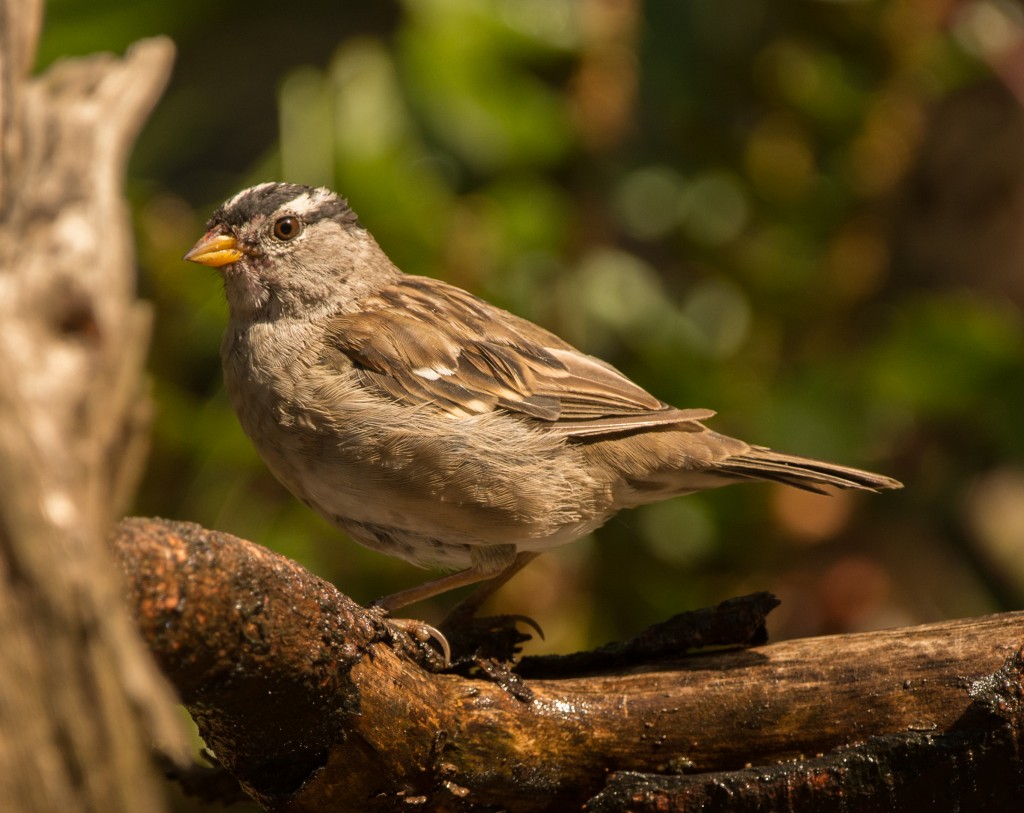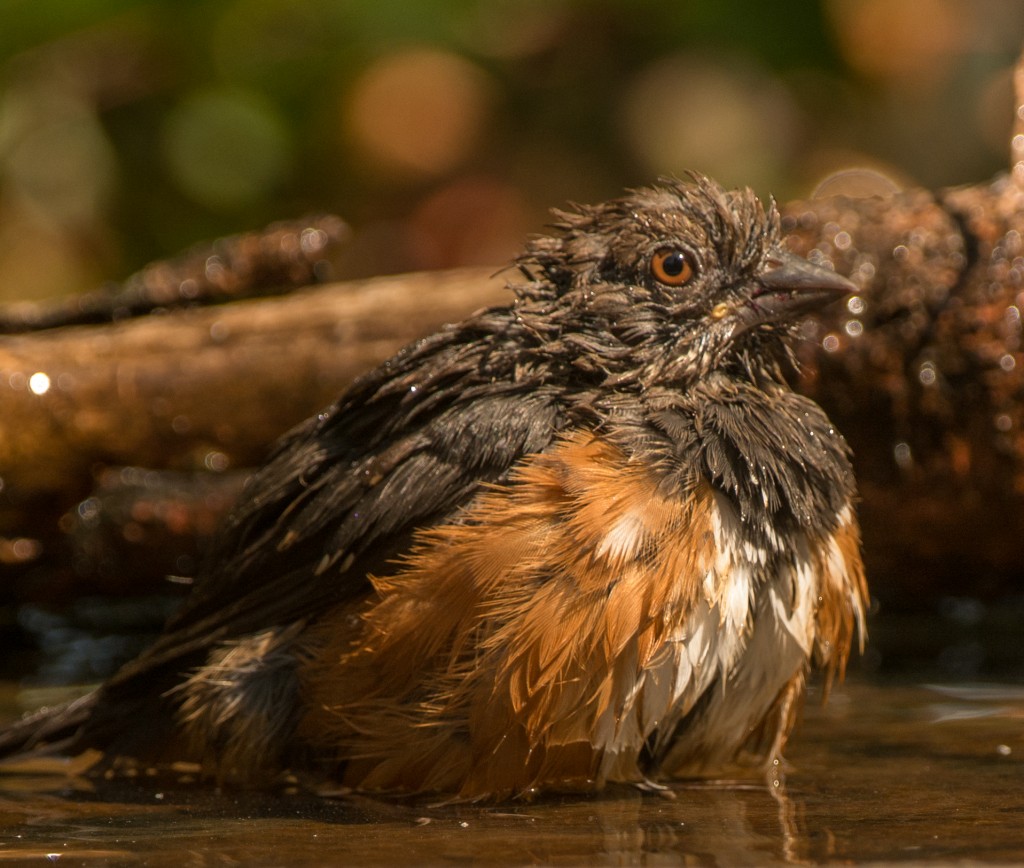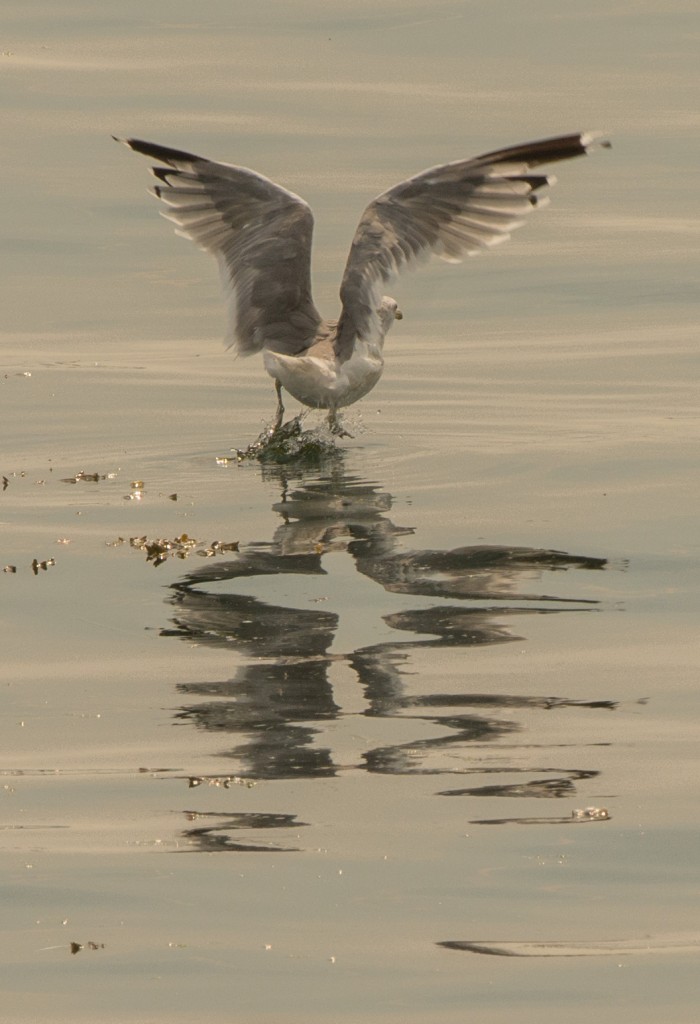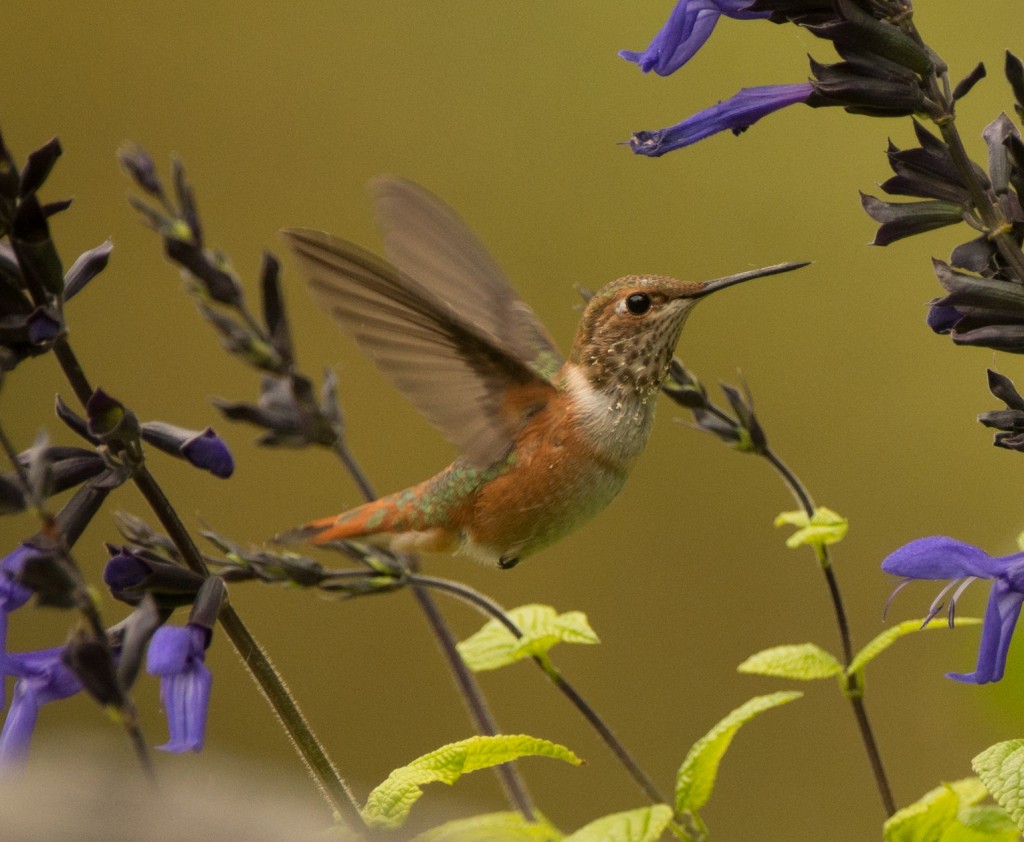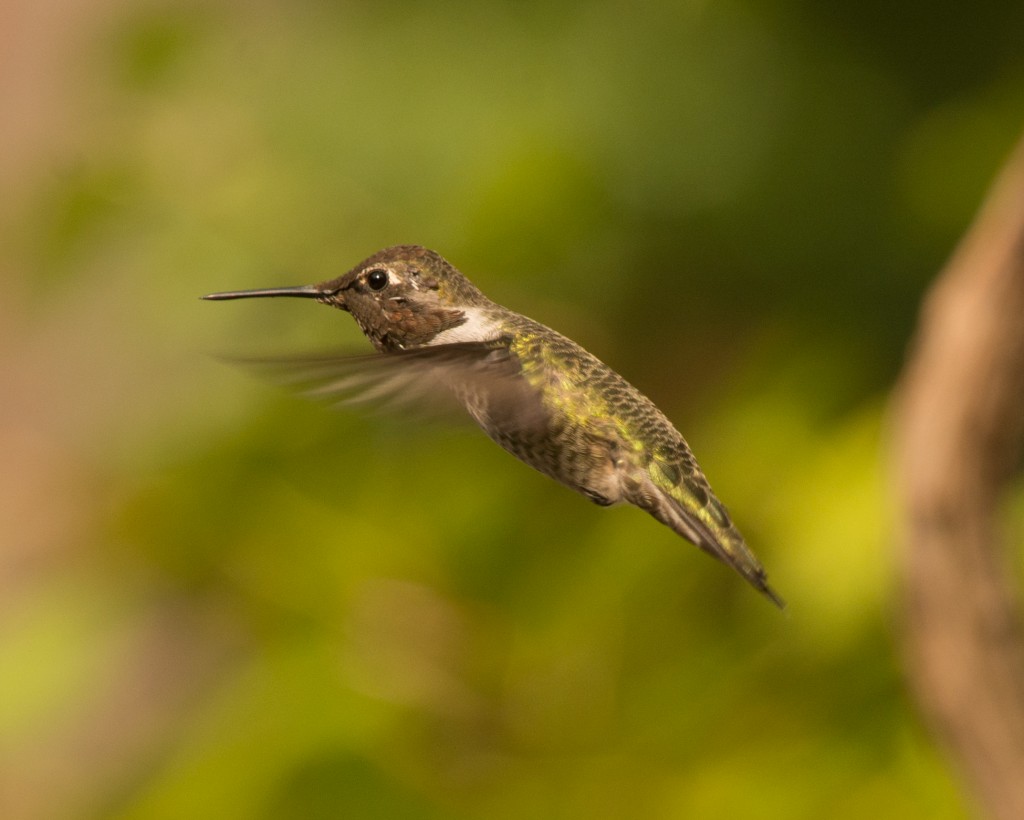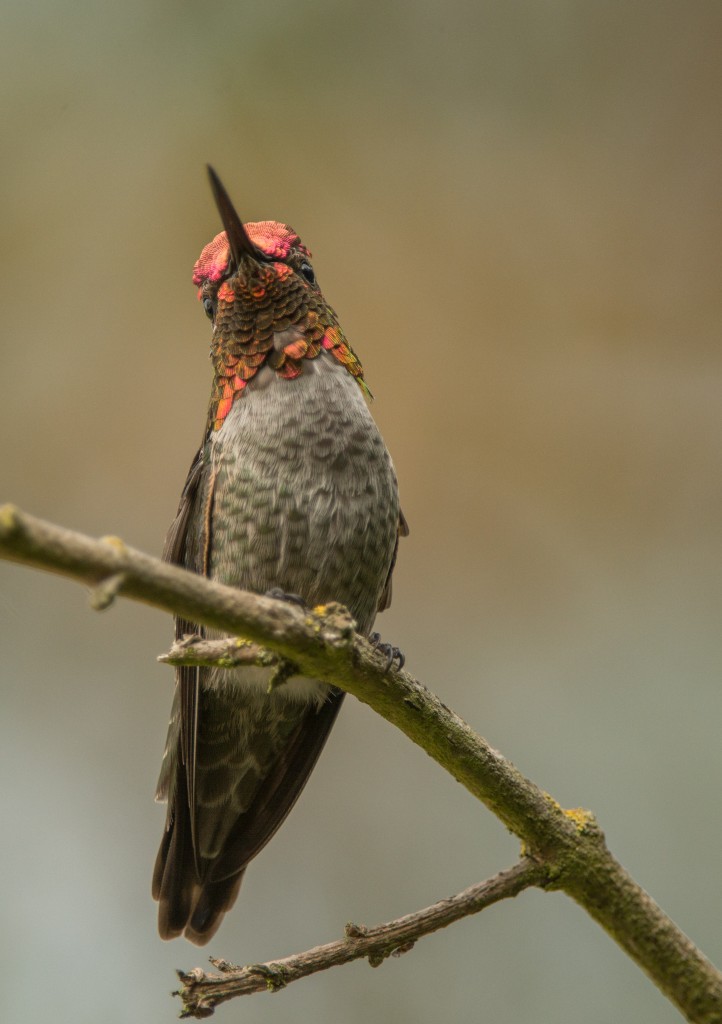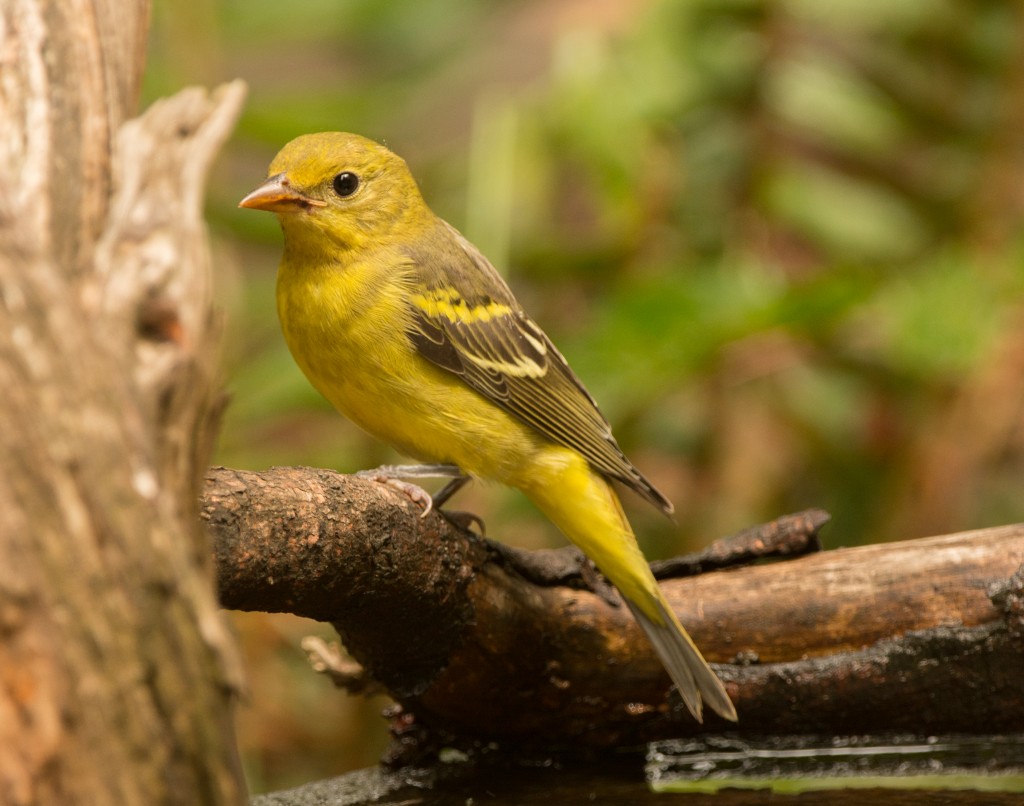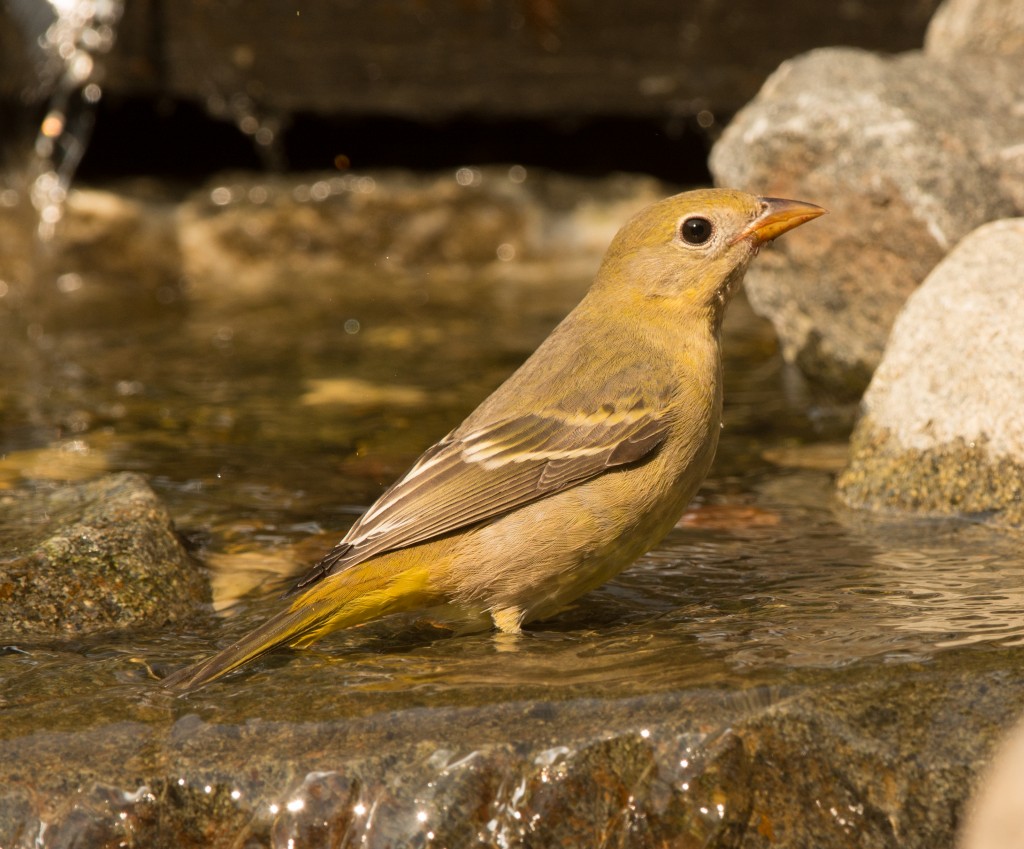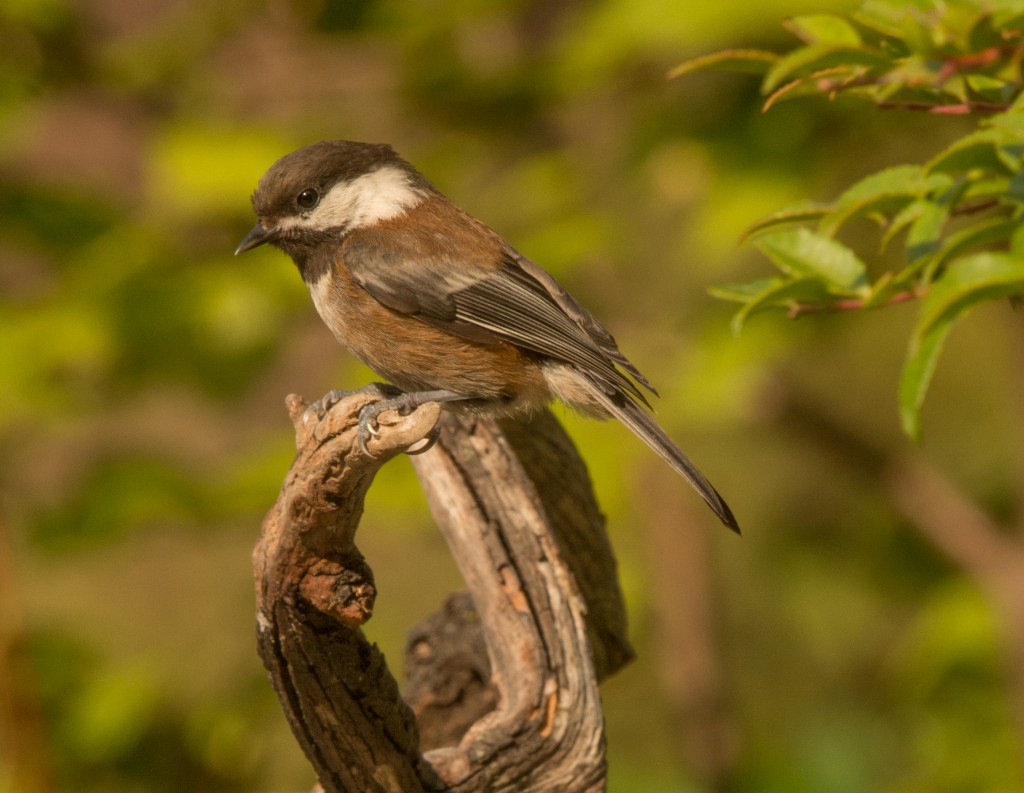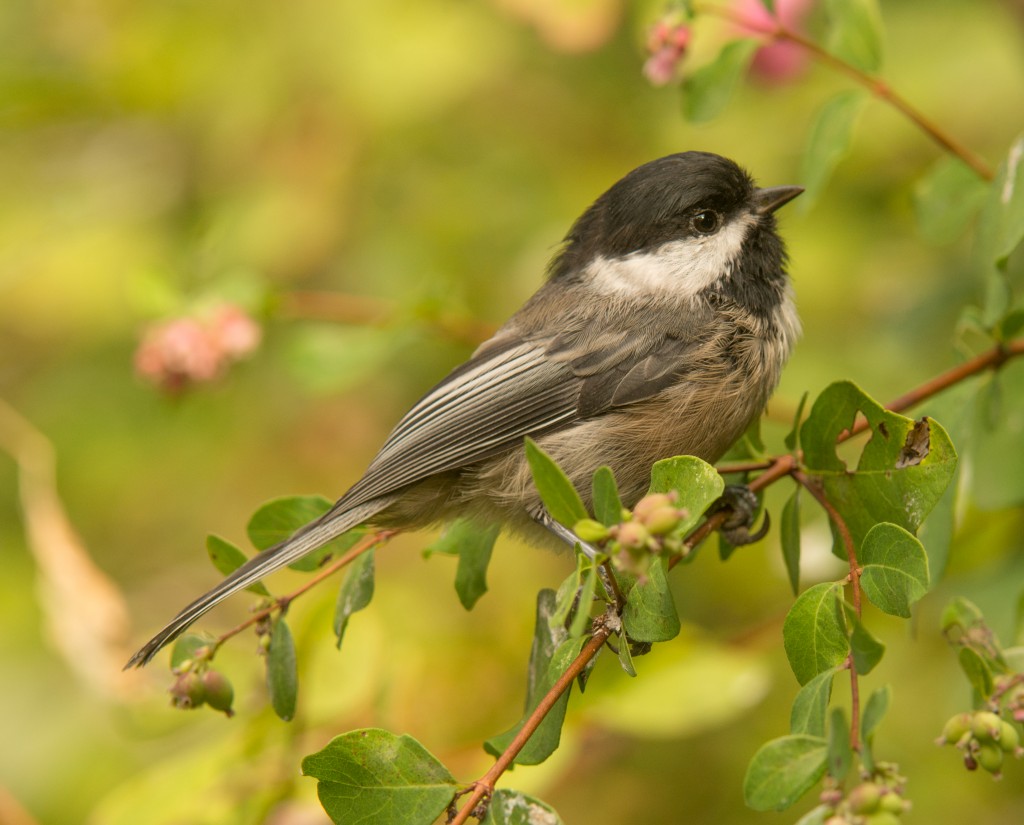With the good weather we’ve had the last several weeks I’ve had more days to spend in the yard observing and photographing avian visitors. I usually take somewhere around 150 photographs a day, throw away half of them and post five or six of the ones that are left. However, since I don’t post a blog every day there are a lot of photographs you don’t get to see.
But enough of the administrative details and on to the birds. On Tuesday (8/26/2014) afternoon I observed a pair of mature Red crossbills 100′ or more above the ground. As I watched, one and then the other flew straight down towards me and landed in a medium-sized madrone tree about 30′ in front of me. I could barely see the female but before long, without knowing how it had happened, both birds apparently gave up entering the watercourse and left the yard. I was very disappointed in that this was the first visit of anything other than juvenile crossbills this year.
On Wednesday afternoon my wife told me that, while I was taking a nap, a pair of crossbills had visited the watercourse. I waited the rest of the afternoon with no successful sightings.
I was back out on Thursday and had two “first year” crossbills visit the watercourse and was able to obtain photos.
I have had successful sightings (with photos) of Orange-crowned warblers on an almost daily basis. Many of them are very bright and, from at least my point of view, are easily confused with Yellow warblers which are much rarer visitors to our house. Here are some of the photos I’ve managed of Orange-crowned warblers, all taken on Thursday.
We’ve also had a rather shy female Western tanager visit the yard on an almost daily basis. It’s obviously interested in the watercourse and the other bird activity in the yard but thus far it won’t leave the cover of the trees for the watercourse.
And while I wait for the rare visitors, I photograph some of our more mundane visitors. We have two White-crowned sparrows which are apparently the product of this year’s breeding. This is unusual for us in that this year was apparently the first in the past seven years that a pair has mated in the area, and unfortunately the first young that showed up with one of the adults was a Brown-headed cowbird! I had given up hope for a successful breeding season until the two young sparrows appeared.
And finally, we have a pair of Anna’s hummingbirds with us and there is still a juvenile male Rufous with us. The Rufous needs to get moving south! Here’s the male Anna’s that tries to defend the single feeder we have out, the watercourse and the greater yard. Click on this photo to enlarge it… the bird’s feathers are amazing!

